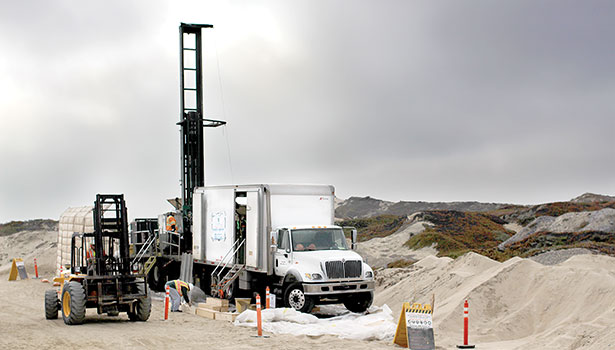Slant Well to Address Water Shortage Without Harming Environment
By Valerie King; National Driller*
History is unfolding along the coast of California, according to Dennis Williams, president of GEOSCIENCE Support Services Inc.
His groundwater consulting firm has designed something like 1,000 municipal water supply wells in almost 40 years. But those were typical wells, vertical wells. What he’s working on now he’s only done once before.
“Necessity is the mother of invention,” he said, alluding to a well technology his firm is designing for California’s Monterey Peninsula. It’s called a slant well or subsurface intake, and while the technology has been used in Europe and tested in the United States, he says it’s still a very rare method.
“The evolution of the subsurface slant well technology,” as Williams calls it, is an outcome of California state regulators and environmental groups that prefer an environmentally friendly approach to desalination. Their goal is to avoid harming marine life like more traditional ocean pipelines tend to.
The slant well will be drilled close to the coastline at a diagonal and collect enough ocean water to produce about 100 million gallons of drinkable water daily.
That’s what California American Water hopes, according to Rich Svindland, vice president of engineering. California American Water is a subsidiary of American Water Works Company Inc., the largest publicly traded U.S. water and wastewater utility company. They proposed the idea after California ordered reductions to the Monterey Peninsula’s current water sources, a local river and aquifer that are expected to lose more than half of their current supply in the next decade.
“The idea is that we’re trying to launch a well field out under the ocean floor to basically ensure that we capture ocean water as opposed to inland ground freshwater,” Svindland said. The local groundwater basin he’s referring to is protected and cannot be exported to residents across the peninsula.
*This article was originally published in National Driller, Copyright 2014. The entire article can be found at National Driller.









